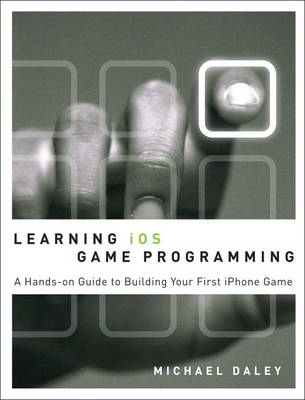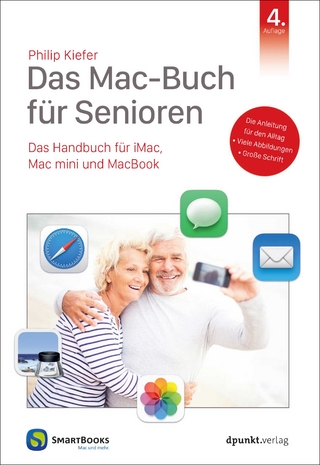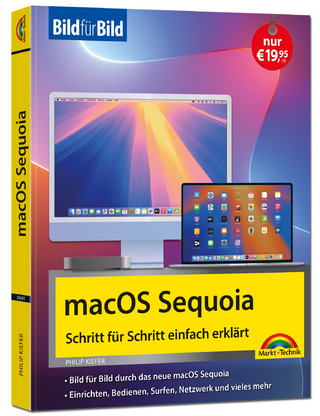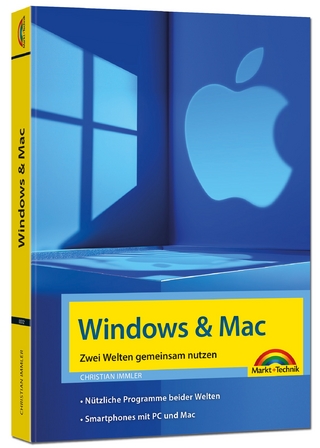
Learning iOS Game Programming
Addison-Wesley Educational Publishers Inc (Verlag)
978-0-321-69942-8 (ISBN)
- Titel ist leider vergriffen;
keine Neuauflage - Artikel merken
Since the launch of the App Store, games have been the hottest category of apps for the iPhone, iPod touch, and iPad. That means your best chance of tapping into the iPhone/iPad “Gold Rush” is to put out a killer game that everyone wants to play (and talk about). While many people think games are hard to build, they can actually be quite easy, and Learning iOS Game Programming is your perfect beginner’s guide. Michael Daley walks you through every step as you build a killer 2D game for the iPhone.
In Learning iOS Game Programming, you’ll learn how to build a 2D tile map game, Sir Lamorak’s Quest: The Spell of Release (which is free in the App Store). You can download and play the game you’re going to build while you learn about the code and everything behind the scenes. Daley identifies the key characteristics of a successful iPhone game and introduces the technologies, terminology, and tools you will use. Then, he carefully guides you through the whole development process: from planning storylines and game play all the way through testing and tuning.
Download the free version of Sir Lamorak’s Quest from the App Store today, while you learn how to build the game in this book.
Coverage includes
Planning high-level game design, components, and difficulty levels
Using game loops to make sure the right events happen at the right time
Rendering images, creating sprite sheets, and building basic animations
Using tile maps to build large game worlds from small reusable images
Creating fire, explosions, smoke, sparks, and other organic effects
Delivering great sound via OpenAL and the iPhone’s media player
Providing game control via iPhone’s touch and accelerometer features
Crafting an effective, intuitive game interface
Building game objects and entities and making them work properly
Detecting collisions and ensuring the right response to them
Polishing, testing, debugging, and performance-tuning your game
Learning iOS Game Programming focuses on the features, concepts, and techniques you’ll use most often—and helps you master them in a real-world context. This book is 100% useful and 100% practical; there’s never been an iPhone game development book like it!
Praise for Learning iOS Game Programming
“An excellent introduction into the world of game development explaining every aspect of game design and implementation for the iPad, iPhone, and iPod touch devices. A great way for anyone interested in writing games to get started.”
–Tom Bradley, Software Architect, Designer of TBXML
“A great developer and a great game.That’s everything you can find in this book to learn how to write an awesome game for iPhone.Maybe you’re the next AppStore hit!”
–Sebastien Cardoso
“With Learning iOS Game Programming, you’ll be writing your own games in no time. The code included is well explained and will save you hours of looking up obscure stuff in the documentation and online forums.”
–Pablo Gomez Basanta, Founder, Shifting Mind
“I always thought that to teach others one has to be an expert and a person with an established reputation in the field. Michael Daley proved me wrong. He is teaching others while studying himself. Michael’s passion in teaching and studying, ease of solutions to problems, and a complete game as a resulting project makes this book one of the best I have ever read.”
–Eugene Snyetilov
“If you’re interested in 2D game programming with the iOS using OpenGL and OpenAL directly, this book walks you through creating a complete and fun game without getting bogged down in technical details.”
–Scott D.Yelich
“Michael Daley brings clarity to the haze of iPhone application development. Concrete examples, thorough explanation, and timesaving tips make this book a must have for the up and coming iPhone game developer.”
–Brandon Middleton, Creator of Tic Tac Toe Ten
“This is the A-Z guide to iOS game development; Michael’s book takes you from the basics and terminology to using the techniques in practice on a fully working game. Before you know it, you will find yourself writing your own game, fueled by a firm grasp of the principles and techniques learned within. I could not ask for a better reference in developing our own games.”
–Rod Strougo, Founder Prop Group
Michael Daley is co-founder of 71Squared.com and author of Learning iOS Game Programming. 71Squared.com is an indie development shop that produces OS X-based tools for game developers namely Particle Designer and Glyph Designer. Mike also produces video tutorials through the 71Squared.com blog, which cover the basics of game engine design using a relaxed easy to follow approach. Mike is a strong believer in delivering resources that help new entrants into game programming get up and running by breaking things down and introducing simple approaches first. This allows people to see results and not get too bogged down before they even get started. In what time he has left he flies light aircraft, plays games and tries to introduce his children into the world of all things Apple.
Preface xxi
1 Game Design 1
The Game That Started It All (For Me) 3
So, What’s the Big Idea? 4
A Game That Fits with the iPhone 4
The Storyline 5
What’s in a Name? 5
The Game’s Objective 6
Game Play Components 7
Time 7
Lives 7
Health 8
Objects 8
Doors 9
Weapons 10
Entities 10
Player 11
Summary 11
2 The Three Ts: Terminology, Technology, and Tools 13
Terminology 14
Sprite 14
Sprite Sheet 16
Animation 18
Bitmap Fonts 19
Tile Maps 20
Particle System 21
Collision Detection 22
Artificial Intelligence (AI) 23
Game Loop 24
Technology 26
Objective-C 26
Cocoa Touch 27
OpenGL ES 27
OpenAL 30
Tools 31
The iPhone SDK 32
Summary 38
3 The Journey Begins 39
Creating the Project in Xcode 39
Running the Project 42
Under the Hood 43
Application Delegate 43
Examining the Header File 44
Examining the Implementation File 46
EAGLView 49
EAGLView.h 49
EAGLView.m 50
ES1Renderer 58
Examining ES1Renderer.h 58
Examining ES1Renderer.m 59
Creating the Framebuffer and Renderbuffer 60
Defining the Color Values 66
Positioning 67
How OpenGL Works 68
Applying Transformations on the Model 69
Rendering to the Screen 70
Summary 72
4 The Game Loop 73
Timing Is Everything 73
Collision Detection 74
The Game Loop 75
Frame-Based 75
Time-Based, Fixed Interval 77
Getting Started 78
Inside the EAGLView Class 79
Inside the EAGLView.m File 79
ES1Renderer Class 82
Configuring the View Port 85
Game Scenes and the Game Controller 86
Creating the Game Controller 87
The GameController Class 87
Creating the Singleton 89
Inside GameController.m 89
AbstractScene Class 92
GameScene Class 93
Summary 95
Exercises 95
5 Image Rendering 97
Introduction to Rendering 97
Rendering a Quad 98
Texture Mapping 101
Texture Coordinates 101
Interleaved Vertex Arrays 104
Structures 106
Image Rendering Classes 107
Texture2D Class 108
TextureManager Class 116
ImageRenderManager Class 119
The Image Class 126
I nitialization 126
Retrieving a Sub-Image 129
Duplicate an Image 130
Rendering an Image 130
Getters and Setters 134
Summary 134
Exercise 135
6 Sprite Sheets 137
Introduction to Sprite Sheets 137
Simple Sprite Sheet 138
Complex Sprite Sheets 139
Using Zwoptex 141
The SpriteSheet Class 142
Initialization 143
Retrieving Sprites 146
PackedSpriteSheet Class 147
Initialization 147
Parsing the Control File 148
Retrieving a Sprite 149
Summary 150
Exercise 151
7 Animation 153
Animation Chapter Project 153
Introduction to Animation 154
Frames 154
State w155
Type 155
Direction 155
Bounce Frame 155
Animation Class 156
Initialization 156
Adding Frames 157
Animation Updates 158
Animation Rendering 160
Finishing Things Off 161
Summary 163
Exercise 163
8 Bitmap Fonts 165
Bitmap Font Project 165
Introduction to Bitmap Fonts 166
Creating the Bitmap Font Sprite Sheet 167
The BitmapFont Class 170
Header File 170
What’s with the C? 171
Initializer 171
Parsing the Control File 172
Rendering Text 176
Rendering Justified Text 178
Text Width and Height 180
Deallocation 181
Summary 181
Exercise 182
9 Tile Maps 183
Getting Started with the Tile Map Project 183
Introduction to Tile Maps 184
Tile Map Editor 186
Tile Palette 188
Layers 188
Creating a Tile Map 189
Create a New Tile Set 190
Creating Map Layers 191
Creating Object Layers 191
Drawing the Map 192
Placing Objects 192
Understanding the Tiled Configuration File 193
Map Element 193
Tileset Element 193
Layer Element 194
Object Group Element 195
Tile Map Classes 196
Layer Class 196
TileSet Class 202
TiledMap Class 204
Initialization 205
Parsing a Map File 207
Creating the Layer Images 216
Rendering a Layer 218
Getting Tile Informaiton 220
Summary 220
Exercise 221
10 The Particle Emitter 223
Particle Emitter Project 224
Introduction to Particle Systems 225
Particle System Parameters 226
Life Cycle of a Particle 227
A Particle Is Born 227
A Particle Lives 228
A Particle Dies 229
A Particle Is Reborn 229
Particle Emitter Configuration 230
Particle Emitter Classes 231
TBXMLParticleAdditions Class 231
ParticleEmitter Class 233
Have a Play 247
Summary 248
11 Sound 249
Sound Project 249
Introduction to Sound on the iPhone 250
Audio Sessions 250
Playing Music 252
Playing Sound Effects 252
Creating Sound Effects 254
Stereo Versus Mono 256
Sound Manager Classes 256
SoundManager Class 257
Sound Effect Management 273
Loading Sound Effects 274
Playing Sound Effects 276
Stopping Sound Effects 279
Setting Sound Effect and Listener Position 281
Handling Sound Interruptions 281
Summary 284
12 User Input 285
User Input Project 285
Introduction to User Input 287
Touch Events 287
Processing Touch Events 289
The touchesBegan Phase 290
The touchesMoved Phase 292
The touchesEnded Phase 294
Processing Taps 294
Accelerometer Events 296
Summary 298
13 The Game Interface 299
Game Interface Project 299
OpenGL ES Interface 300
Rendering the Interface 301
Defining Button Bounds 304
Handling Touches 304
Handling Transitions 308
OpenGL ES Orientation 308
UIKit Interfaces 312
Creating the Interface 312
Wiring Up the Interface 315
UIKit Orientation 318
Showing and Hiding a UIKit Interface 320
Summary 323
14 Game Objects and Entities 325
Game Objects and Entities Project 325
Game Objects 326
AbstractObject Class 327
EnergyObject Class 329
Game Entities 338
AbstractEntity Class 339
Artificial Intelligence 341
Player Entity Class 343
Saving a Game Object or Entity 352
Summary 355
15 Collision Detection 357
Introduction to Collision Detection 357
Collision Pruning 358
Frame-Based Versus Time-Based 359
Axis-Aligned Bounding Boxes 360
Detecting Collisions 361
Collision Map 362
Entity-to-Map Collision Detection 365
Entity-to-Entity Collision Detection 367
Summary 368
16 Putting It All Together 369
The “Camera” 369
Saving the Game State and Settings 371
Saving Game State 371
Loading Game State 373
Saving Game Settings 375
Loading Game Settings 376
Saving High Scores 377
Adding a Score 379
Saving High Scores 380
Loading High Scores 381
Performance and Tuning 382
Using Instruments 383
Leaks Instrument 384
Using the OpenGL ES Instrument 387
Compiling for Thumb 389
Beta Testing 390
Multiple Device Types 391
Feedback 392
Summary 392
Index 395
| Erscheint lt. Verlag | 16.9.2010 |
|---|---|
| Verlagsort | New Jersey |
| Sprache | englisch |
| Maße | 180 x 228 mm |
| Gewicht | 820 g |
| Themenwelt | Sachbuch/Ratgeber ► Freizeit / Hobby ► Spielen / Raten |
| Informatik ► Betriebssysteme / Server ► Macintosh / Mac OS X | |
| Informatik ► Software Entwicklung ► Spieleprogrammierung | |
| ISBN-10 | 0-321-69942-4 / 0321699424 |
| ISBN-13 | 978-0-321-69942-8 / 9780321699428 |
| Zustand | Neuware |
| Informationen gemäß Produktsicherheitsverordnung (GPSR) | |
| Haben Sie eine Frage zum Produkt? |
aus dem Bereich


